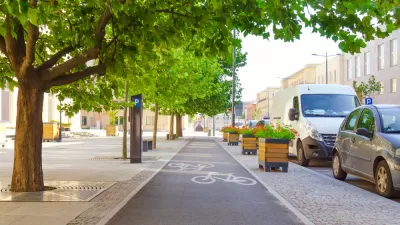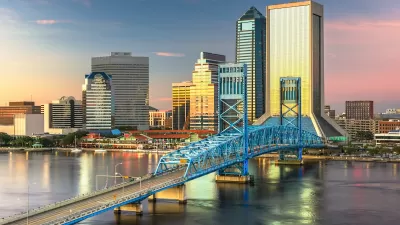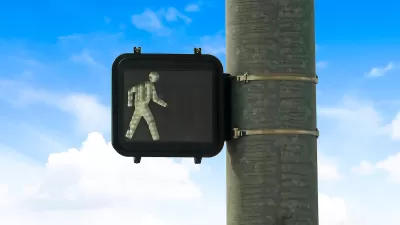While other countries are seeing fewer road deaths, traffic violence in the United States is back on the rise.

The rate of Americans dying in traffic crashes far outpaces that of most other developed nations, reports David Zipper for Bloomberg CityLab, begging the question: why?
While many Americans attribute the higher rate of road deaths to our reliance on cars, Zipper argues that, based on his extensive research on the topic, “The closer you look, the clearer it becomes that the US traffic safety crisis is not a reflection of geography or culture,” but rather of conscious policy decisions that privilege fast car travel and carmakers over road safety and multimodal transportation.
According to Zipper, this phenomenon took off more recently. In the 1970s and 1980s, the United States could claim to be a leader in road safety as innovations such as seatbelts and airbags became mandatory. “But in the last 30 years, the US has not kept pace with tumbling traffic death rates in Europe, east Asia and Canada. In 2021, as the US hit a 16-year high for fatalities, Japan and Norway posted the lowest number of road deaths since the 1940s.” Pedestrian death rates in the United States rose at even more alarming rates.
Zipper attributes this to a variety of factors, including the rise of car-free and ‘car-light’ zones in European cities, as well as the use of automatic traffic cameras and other safety improvements like road diets and roundabouts. Regulations on vehicle design play a role, too: “The European Union added pedestrian safety tests to NCAP crash ratings over two decades ago, and Japan, China and Australia now conduct them as well. The US still does not.” Other factors include comparatively low fuel taxes in the United States, land use patterns that encourage driving, and poorly resourced public transit systems.
Zipper suggests that the easiest solutions are the simplest. There’s no need to wait for technology to save us. Proven, analog tools for slowing traffic and prioritizing pedestrian safety already exist.
FULL STORY: US Traffic Safety Is Getting Worse, While Other Countries Improve

Study: Maui’s Plan to Convert Vacation Rentals to Long-Term Housing Could Cause Nearly $1 Billion Economic Loss
The plan would reduce visitor accommodation by 25,% resulting in 1,900 jobs lost.

North Texas Transit Leaders Tout Benefits of TOD for Growing Region
At a summit focused on transit-oriented development, policymakers discussed how North Texas’ expanded light rail system can serve as a tool for economic growth.

Why Should We Subsidize Public Transportation?
Many public transit agencies face financial stress due to rising costs, declining fare revenue, and declining subsidies. Transit advocates must provide a strong business case for increasing public transit funding.

How to Make US Trains Faster
Changes to boarding platforms and a switch to electric trains could improve U.S. passenger rail service without the added cost of high-speed rail.

Columbia’s Revitalized ‘Loop’ Is a Hub for Local Entrepreneurs
A focus on small businesses is helping a commercial corridor in Columbia, Missouri thrive.

Invasive Insect Threatens Minnesota’s Ash Forests
The Emerald Ash Borer is a rapidly spreading invasive pest threatening Minnesota’s ash trees, and homeowners are encouraged to plant diverse replacement species, avoid moving ash firewood, and monitor for signs of infestation.
Urban Design for Planners 1: Software Tools
This six-course series explores essential urban design concepts using open source software and equips planners with the tools they need to participate fully in the urban design process.
Planning for Universal Design
Learn the tools for implementing Universal Design in planning regulations.
Ascent Environmental
Borough of Carlisle
Institute for Housing and Urban Development Studies (IHS)
City of Grandview
Harvard GSD Executive Education
Toledo-Lucas County Plan Commissions
Salt Lake City
NYU Wagner Graduate School of Public Service





























